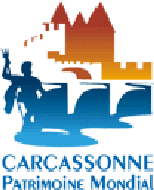In 1637, Bishop Vitalis de Lestang ordered Crespin Verniole from Poitiers to install an organ.
This instrument possessed a great case in which took place nine stops with a single keyboard and a pedalboard of 12 pedal keys. It was fed by three big bellows. The central part of the case remains, made by two cabinetmakers from Carcassonne: Jean Rigail and Jean Melair.
|
|
|
|
|
|
|
This instrument, too modest for a cathedral, was rather quickly replaced by one of bigger proportions. The works were entrusted to Jean de Joyeuse, an organ builder native of Ardennes who was just arriving to Carcassonne on Summer 1677. On March 18th 1679 the cathedral council contracted for a 24 stops organ with two main keyboards (Great organ and Choir organ), an Echo keyboard as well as a pedalboard of two octaves by pedal coupler. Jean de Joyeuse used the already existing great case and arranged inside a 8 feet instrument with a 16' Bourdon stop.
|
|
|
|
Between 1772 and 1775, a complete rehabilitation of the Jean de Joyeuse organ was entrusted to Jean-Pierre Cavaillé. On the advices of this organ builder and of the organist Joseph Laguna, the cathedral council accepted to enlarge the instrument. This organ possessed three keyboards with 32 stops among which 4 independent pedal stops (three 48 keys for the keyboards -Choir, Great, Solo- and 28 keys for the pedalboard).
|
|
|
|
|
|
|
During the French Revolution the organ suffered no serious damages.
Between 1900 and 1904, Michel Roger altered the instrument, leaving however untouched the windchest, the old bellows and most of the pipes.
|
|
|
|
The entire organ was finally restored in 1985 by Barthélemy Formentelli using original parts (windchests, bellows, pipework) and new pipes that were copied from the ancient organ.
Nowadays, this organ is composed by four keyboards (Choir - Great - Positive - Solo) and a French pedalboard with 40 stops (9 - 14 - 9 - 3 and 5).
|
|
|
|
|
Jean-Louis BERGNES
Appointed Organist of St Nazaire Basilica
Carcassonne
|
|

